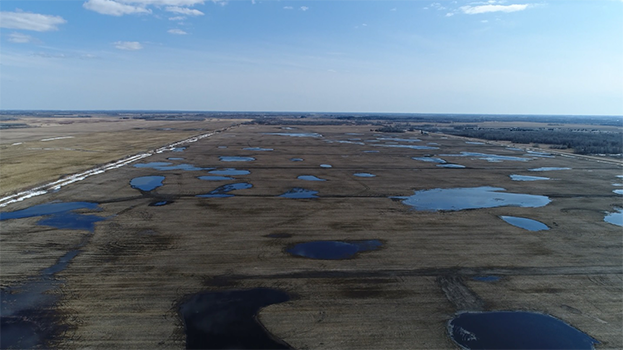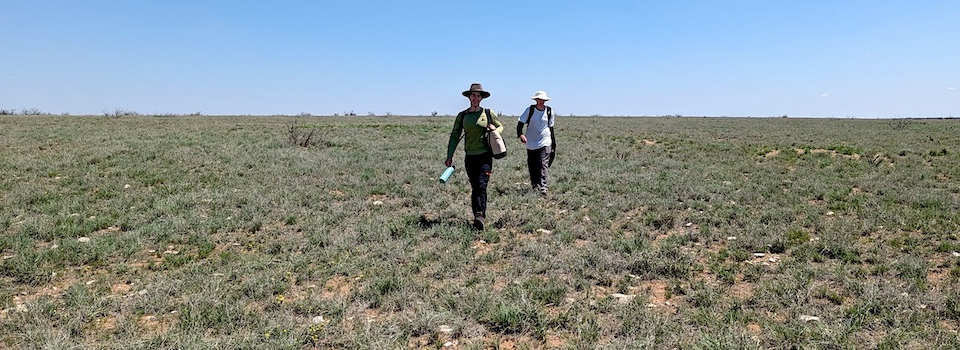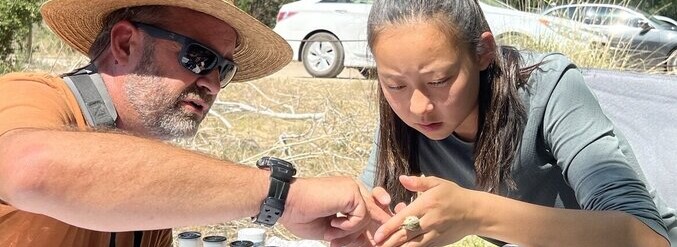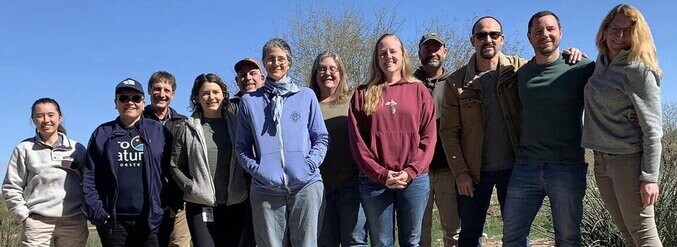Story and photo by Sabin Adams, Pheasants Forever Habitat Restoration Specialist in Minnesota
For the last couple decades, a spring drive north of Gary, Minnesota on Highway 32 would have taken you by numerous rows of drainage ditches and vast, level expanses of black dirt. Going 60 miles per hour, it would be hard to imagine that the flat monotony might one day turn into potholes filled with ducks, that the uplands might once again become a jungle of wildflowers with rough blazing star and lead plant, or that a brood of Greater Prairie-Chickens might race through the understory catching insects.
There is no need to channel your inner child’s imagination to picture this anymore. On your next drive you can pull over and visit the 618-acre Prairie Dunes Wildlife Management Area (WMA). If you decide to wander into the WMA, you’ll want to bring a map to navigate around the 120 restored prairie pothole wetlands that are speckled across the area.
The details of restoration won’t be left to the imagination either. Specifically, it took a month and a half of work to restore the entire unit to prairie and wetlands with over 32,000 cubic yards of sediment removed. The upland acres were seeded with nearly twenty thousand pounds of locally harvested seed of 70 species of native grasses and wildflowers to revive this prairie.
As a result of all the effort, in the early hours of a spring day you will likely hear the booming of Greater Prairie-Chickens, as Prairie Dunes WMA’s treeless landscape is ideally suited for their mating dance. Providing habitat for these dancers along with the waterfowl and other wildlife is at the heart of why, in 2017, Pheasants Forever, the Minnesota Prairie Chicken Society, the Outdoor Heritage Fund, the North American Wetlands Conservation Act, and the Minnesota Department of Natural Resources worked in partnership to purchase and restore this area.
This project was spearheaded by Prairie Pothole Joint Venture (PPJV) partners that have led habitat restoration efforts in the tallgrass prairie region where most of the wetlands and grasslands have been converted to row crop agriculture. The PPJV prioritized the NAWCA grant for funding based on the partners’ proven track record of integrating efforts to restore priority habitats.
Build it, and they will come.
Quite possibly the best part about standing on Prairie Dunes WMA is knowing that on your next spring drive north of Gary, and for untold decades to come, this permanently protected public land will still be here, providing habitat for all manner of wildlife and enjoyment for all people who take the time to appreciate its wild beauty.






